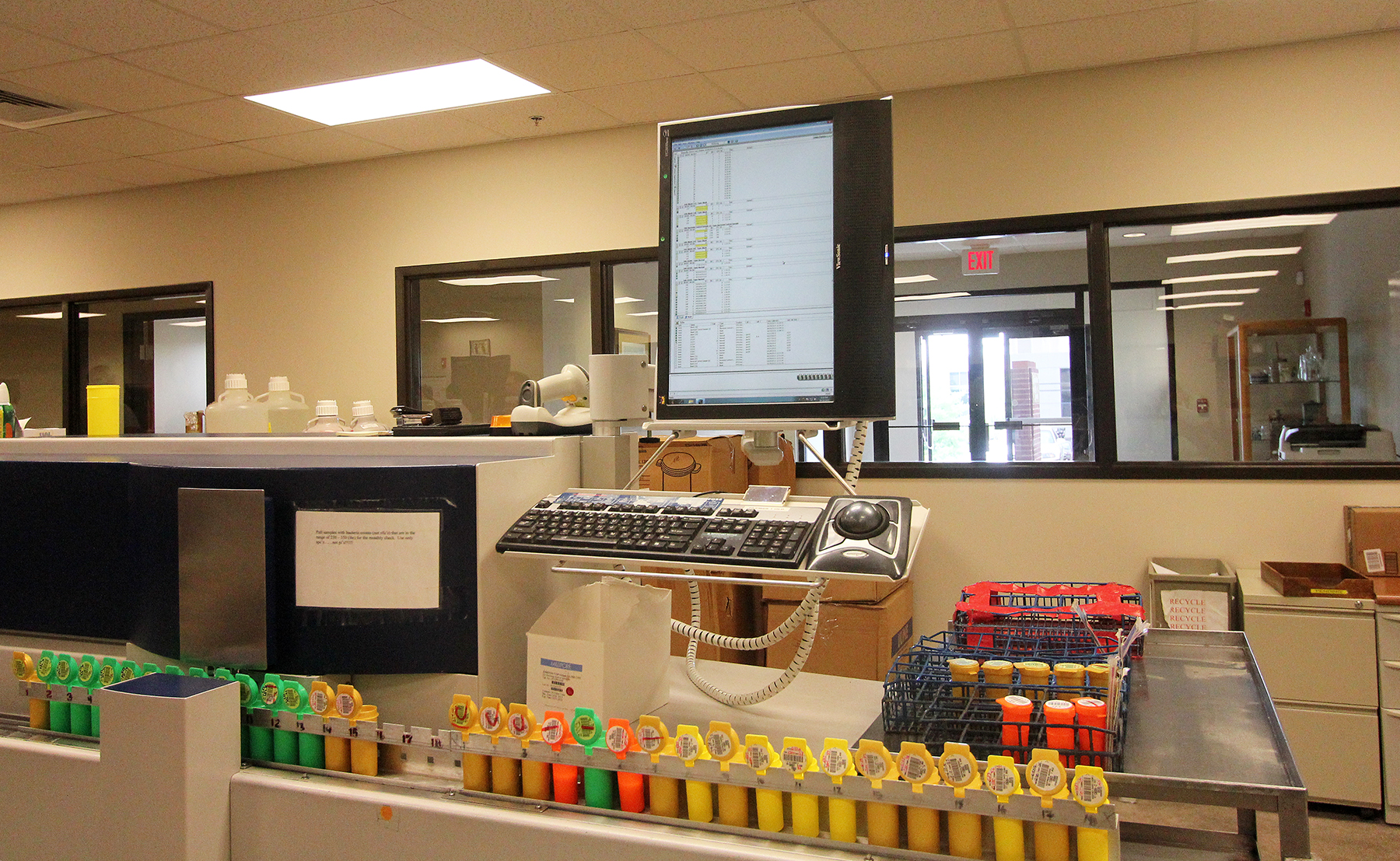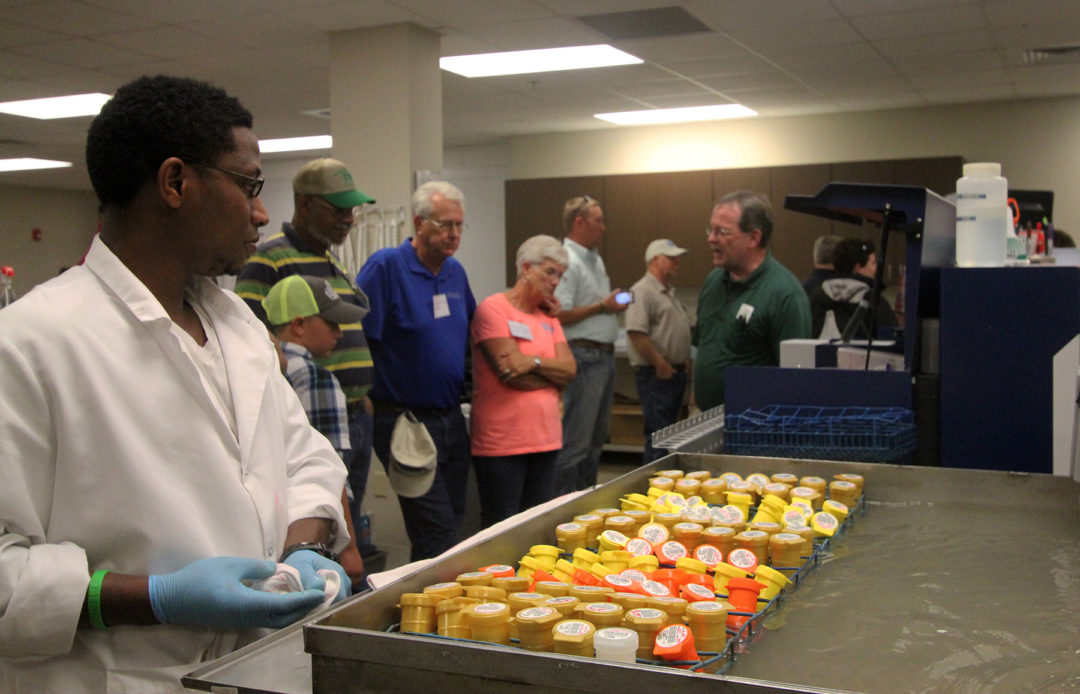Until a few years ago, milk testing at Consolidated Lab Services LLC was done by pipette with glass petri dishes and bottles. Samples were analyzed and recorded manually. Results took time, and tracking down individual farm results meant sorting through paperwork.
Today, sophisticated automated scanning processes are used from start to finish, and the results are entered seamlessly with bar-code identification for easy access, retrieval and trace-back.
Young dairy producers from Kentucky recently visited the lab in Knoxville, Tennessee, and saw coolers stacked high from dairy plants in a variety of states and as far away as Pennsylvania and Texas. Coolers arrive at the lab via an impressive “pony express style” system of couriers. The state- and FDA-certified, DFA-owned lab provides milk-testing services for multiple states and represents the consolidation of 13 prior labs into the Southeast’s first regional lab.
Meanwhile, the advancements in technology allow technicians to do more with less – running up to 420 samples per hour through scanners that are calibrated at the beginning of each day. This progress expands capabilities with the regular 5-cc bulk tank milk sample, and for other testing options with additional bulk tank and individual cow milk samples, water and blood samples that a producer sends in with the milk hauler.
The SNAP test for antibiotics, for example, helps get a producer back on the market more quickly after a positive test at the plant.
“There’s no comparison in the amount of information members can get today versus before, and in the turnaround time for test results,” says area manager Bob Shipley. The Knoxville lab is far ahead of the in-plant testing, getting bacteria counts in 24 hours versus the two to three days it takes for plant tests to come in. This means a problem can be found, followed up and remediated at the farm level more quickly than ever before.

What to know to get the most out of regular lab tests
The regular lab results include a wealth of information, not just from a regulatory standpoint, but also as herd management indicators. On the components side, every shipment of milk will have its sample tested for butterfat, protein, free fatty acids, solids non-fat, other solids, lactose and milk urea nitrogen (MUN).
On the milk quality side, somatic cell count (SCC) and freezing point are also done on every sample. The freezing point detects if water has been added to the milk sample, and the SCC is used in determining milk premiums and discounts, but it is also used as a herd management tool for indicating mastitis infection at the herd level.
Other required tests include the antibiotics test using SNAP, CHARM and Delvo. Consolidated Lab Services does this with every sample, but can also do them by request on individual cow samples sent along with the milk hauler to check that antibiotics have cleared the mammary system. More producers are doing this today as insurance against a costly mistake.
Four times a month, tests are done on the milk samples to monitor bacteria counts. The PI test is an estimate of the number of cold-loving bacteria in the milk. There is no legal limit, but the average range is 1,000 to 20,000, and producer pay is affected by the results because the amount of bacteria in the milk affects the shelf life even after pasteurization.
Standard plate count (SPC) is also done four times a month to estimate the total number of viable aerobic bacteria present in raw milk. The legal limit is below 100,000, but averages run 1,000 to 10,000. These levels also affect producer pay below the legal limit because of the effect on milk quality.
In addition, the lab does testing for:
- Lab pasteurized counts to determine the amount of bacteria present after pasteurization. This is run whenever a plant shows a bump in counts so that the affected member farm can be identified quickly and the problem handled to prevent further market losses for discarded milk.
- Sediment
- Coliforms that would indicate unsanitary conditions
- Direct microscopic bacteria counts by visual inspection under a microscope
- Culture tests on both bulk tank and individual cow samples for Staph. aureus, Staph. sp., Strep. ag., strep. non-ag., coliforms, psudomonas, pasturella, candida and prototheca
- Mycoplasma, Johne’s and BVDV
- Pregnancy testing via milk or blood
- Aflataxin
When collecting individual cow milk samples to send with the milk hauler, here are a few things to remember:
- Wear gloves.
- Forestrip and pre-dip and be sure the teat end is dried with a clean cloth or single-service towel. Then scrub the teat end with alcohol until no dirt is visible on the pad or cotton ball.
- Prep the furthest teats first to avoid cross contamination.
- Carefully open the vial without touching the lip and begin first sampling the teats that are closest to you.
- Fill the vial to the ridged line and cool immediately. PD
Sherry Bunting is a freelance writer based in East Earl, Pennsylvania.
PHOTO 1: The Consolidated Lab Services was an eye-opener for Kentucky producers. The elaborate “pony express style” courier system brings samples from across the Southeast and as far north as Pennsylvania and west as East Texas.
PHOTO 2: State-of-the-art equipment enables precise testing at Consolidated Lab Services, Knoxville, Tennessee. While plants like Borden do an eight-minute rapid bacteria test, milk samples are sent to the lab for components and cultures. Photos by Sherry Bunting.






